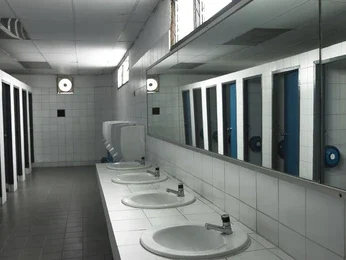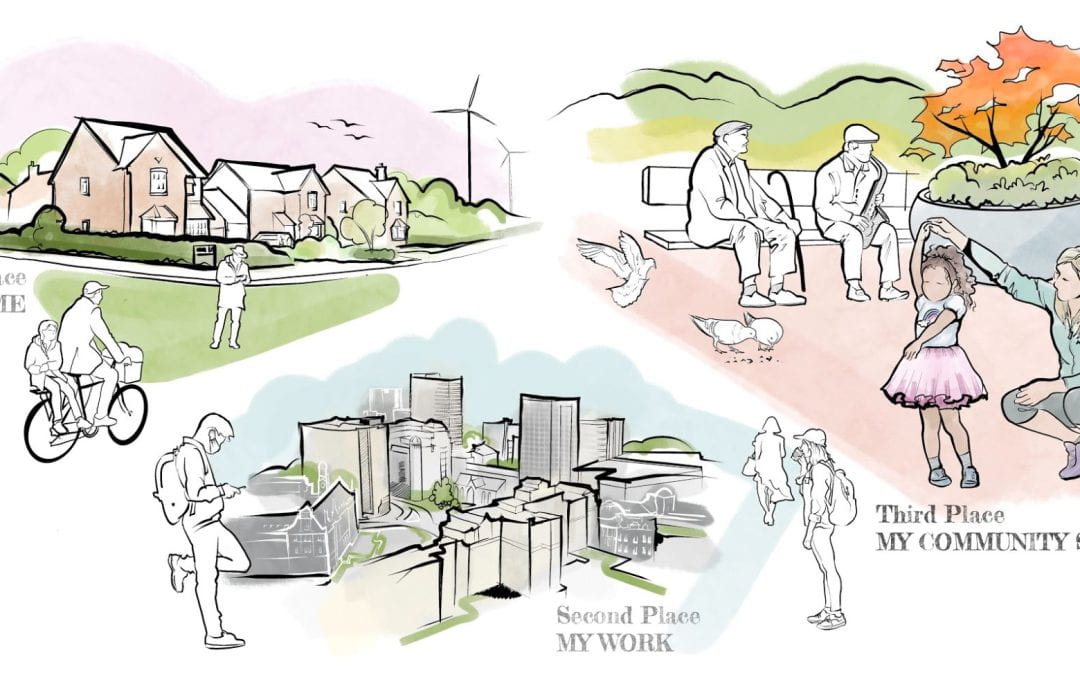It’s no secret that HHS bathrooms have had their problems: fights breaking out, reports of vaping, and students skipping class. With the recent addition of middle schoolers due to school flooding, the situation has become more complicated than ever. Students at Hastings High School have noticed many changes in the bathrooms throughout this school year. For instance, aides were put outside of the bathrooms, and sign-in sheets and a two-student per bathroom limit were implemented. These new bathroom policies have generated a wide range of opinions.
Reports of vaping, physical conflicts, and groups skipping class turned certain Hastings High School bathrooms into places many students tried to avoid. According to Principal Andrew Clayman, “It became clear that the bathrooms were, according to student perspectives, an unsupervised space that was fair game for students to be doing things that they shouldn’t be doing.” He states that, “over the course of the year, we tried a couple of different ways of addressing it. We had some conversations with the key students involved and made larger comments to the broader community. Things didn’t change, so we had to do something a bit more drastic.” Clayman, together with Vice Principal Ms. Ware and the school aides (who are involved in monitoring the bathrooms), rolled out a new set of rules designed to make bathrooms feel safer for the majority of students who simply need to wash their hands and get back to class.
Aides now monitor several restrooms, because according to Mr. Clayman, “having personnel directly outside of the bathroom lets people know that there’s somebody keeping an eye out.” There’s also a two‑student limit for the bathrooms, which helps to cut down on the number of students who are involved in misbehavior, “because most of the time, when students are doing the wrong thing, it’s not by themselves—it’s with other people.” Students are also required to record their name and the time on a sign in sheet, which adds accountability. Mr. Clayman reasons that “if something goes wrong, whether something breaks or there’s the smell of smoke, we know exactly who was in the bathroom at which point in time.”
These new bathroom policies have generated controversy in the high school and have stirred up many opinions from the student body. Ruby Black, a 10th grader, states that while she “understand[s] the whole purpose,” she finds the policies “annoying and unnecessary” to deal with. As she says, “when I’m in the middle of class and I have to run to the bathroom, it takes a lot of time to check in and sign the time.” Anna Konon, another 10th grader, agrees. As she says, “I think that it’s a waste of school funds to have [the aides] sitting out there. It’s annoying for everybody because it’s not stopping anyone from going into the bathroom and vaping — you can go in and vape for five minutes and come out, and nobody would be any wiser.” Because of this, she feels that the new policies are “not actually stopping anything” and are instead “just being a nuisance to everyone else in the school.” When asked about concerns about the effectiveness of the system, Mr. Clayman concurs with Anna in stating that “it’s not a great use of resources.” He agrees that “there are other things that staff members can be doing that could benefit the school more.” He also shared that he recognizes that the policy will never catch every infraction, stating that “you never create a system with the expectation that every single student will follow it; you create a system that ensures the vast majority follow it, and when you find students breaking the rules, you address that behavior.”
According to Mr. Clayman, similar systems have been “moderately successful” in past schools, even though there are some tradeoffs. As he says, “I want to treat young adults like young adults, because when you guys go to college nobody’s going to be policing bathrooms.” Sadly, several students feel that the negative effects outweigh the positive. Though it may be proving to be effective in limiting the number of conflicts and bad behavior in the bathroom, the overall consensus within the high school is a feeling of annoyance and confusion. Additionally, the recent flooding of Farragut Middle School has made it so that middle school students now take some of their classes in the high school section of the building. Many students in the high school believe that the policy is “really for the middle schoolers,” as Ruby Black states. Contrary to popular belief, Mr. Clayman shares that “having the middle school here has allowed us to share resources because the middle school has more school aides as part of their staff, so we’ve been able to use some of their staff members to do this. But we’re not doing this because there are middle schoolers in the high school space.”
If the misbehavior shifts to other bathrooms, Mr. Clayman shares that “one of the next steps I’ve used in the past schools I have worked at is to start shutting down [unmonitored] bathrooms.” He hopes, though, that these policies will yield improvements, and he can eventually make the decision to ease back on them. As he states, “hopefully this is temporary. It’s not the type of experience that I want our students to have, to feel like there’s somebody watching them all the time…but we also have to make sure that everybody’s safe and follows the school rules.” As he says, “the vast majority of students go to the bathroom, wash their hands, and leave; they’re not congregating to skip class or vape. They shouldn’t have to look for a different bathroom because one smells like vape smoke or because students are fighting.” For now, Mr. Clayman’s priority is making every bathroom feel safe; if the data shows real improvement, he says the extra rules can be rolled back—something many high schoolers may be eager to see. Whether students consider the rules a help or an annoyance, the aides, sign-in sheets, and two-student limit will remain while the school tracks reports of vaping and conflict. For both critics and supporters, those numbers will ultimately decide the fate of the policy.




















